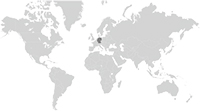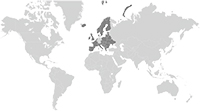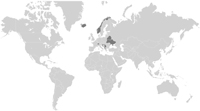Referenzen
Produkte Transfektion
Kostenlose Testsamples
Anwendungshinweise:
Im „Transfection Reagent Selection Guide“ können Sie durch Filterfunktionen z.B. für Ihre Kombination aus zu transfizierender Zelle und Nukleinsäure die Liste vorhandener Referenzen durchsuchen. Ebenso können Sie im Feld „Referenzen durchsuchen“ am Anfang der Seite mit passenden Schlagwörtern zu einem Ergebnis gelangen. Eine Referenz zeigt an, dass das gefundene Transfektionsreagenz bereits erfolgreich für die entsprechende Anwendung verwendet wurde. Im Idealfall sind getestete Transfektionsparameter und Transfektionseffizienzen angegeben.
Keine Referenz? > Allgemeine Auswahlhilfe
Wenn Sie keine Referenz gefunden haben, heißt das nicht, dass kein passendes Reagenz zur Verfügung steht, sondern lediglich, dass bisher keine Erfahrungsberichte vorliegen. In diesem Falle kann durch eine Vorauswahl ein erfolgsversprechendes Transfektionsreagenz ausgewählt (Allgemeine Auswahlhilfe) und letztendlich ausgetestet (Kostenlose Testsamples) werden. Wenn Sie einen Erfahrungsbericht für uns schreiben möchten machen wir Ihnen ein Angebot für eine Gegenleistung.
| CELL TYPE | DESCRIPTION OF CELL TYPE | CAT.NO. | SPECIES | ORIGIN OF CELLS | COMMON CELL TYPE | GROWTH PROPERTIES | NUCLEIC ACID / DELIVERED MOLECULE | APPLICATION | PRODUCT | REFERENCE TYPE | BIBLIOGRAPHIC DATA | LINK | |
|---|---|---|---|---|---|---|---|---|---|---|---|---|---|
| Spodoptera exigua hemocytes of late fourth instar larvae | Insect | unknown | unknown | plasmid | in vivo application | Metafectene PRO | application note |  |
|||||
| Plutella xylostella hemocoel of late second instar larvae | Insect | unknown | unknown | plasmid | in vivo application | Metafectene PRO | publication | S. Kumar et al., Comp. Biochem. and Physiol., 2014, Part A 177: 27-34, doi.org/10.1016/j.cbpa.2014.07.017 | |||||
| Plutella xylostella larvae (diamondback or cabbage moth) | Insect | unknown | unknown | plasmid | in vivo application | Metafectene PRO | publication | W. Gad et al., J. Gen. Virol., Apr 2008; 89: 931 - 938 | Link | ||||
| Plutella xylostella hemocoel of NP3 larvae (diamondback or cabbage moth) | Insect | unknown | unknown | plasmid | in vivo application | Metafectene PRO | publication | S. Kumar et al., PLOSONE, 2017, doi.org/10.1371/journal.pone.0177066 | Link | ||||
| Plutella xylostella, third instar larvae (diamondback or cabbage moth) | Insect | unknown | unknown | plasmid | in vivo application | Metafectene PRO | publication | B. Park et al., Insect Science, 2012, 19: 47–54, DOI 10.1111/j.1744-7917.2011.01421.x | |||||
| Pig bone grafts | Swine | bone | unknown | plasmid | in vivo application | Metafectene PRO | application note |  |
|||||
| Spodoptera exigua | Insect | unknown | unknown | plasmid | in vivo application | Metafectene PRO | publication | S. Ahmed et al., J. of Exp. Biology, 2019, 222, doi:10.1242/jeb.207019 | Link | ||||
| Mouse (C57Bl/L6) cells in the area of the organ of Corti | Mouse | sensory organs | unknown | plasmid | in vivo application | Metafectene | publication | M. Praetorius et al., HNO, May 2008; 56(5): 524-9 | |||||
| Plutella xylostella hemocoel of early third instar larvae (diamondback or cabbage moth) | Insect | unknown | unknown | plasmid | in vivo application | Metafectene PRO | publication | Y. Kim et al., Insect Science, 2016, 23: 235-244, DOI 10.1111/1744-7917.12237 | |||||
| Rat (Sprague-Dawley) | Rat | unknown | unknown | plasmid | in vivo application | Metafectene | publication | T. Holzbach et al., J Cell Mol Med, Mar 2010; 14(3): 587-99 | |||||
| Plutella xylostella, early third instar larvae (diamondback or cabbage moth) | Insect | unknown | unknown | plasmid | in vivo application | Metafectene PRO | publication | M. R. Ali et al., J. of Invertebrate Pathology, 2012, 110: 389–397, doi.org/10.1016/j.jip.2012.05.003 | |||||
rTF |
Rabbit tenon’s capsule fibroblasts | Rabbit | sensory organs | unknown | adherent | plasmid | in vivo application | Metafectene PRO | publication | F. Wang et al., Invest. Ophthalmol. Vis. Sci., Mar 2010; 51: 1475 - 1482 |









